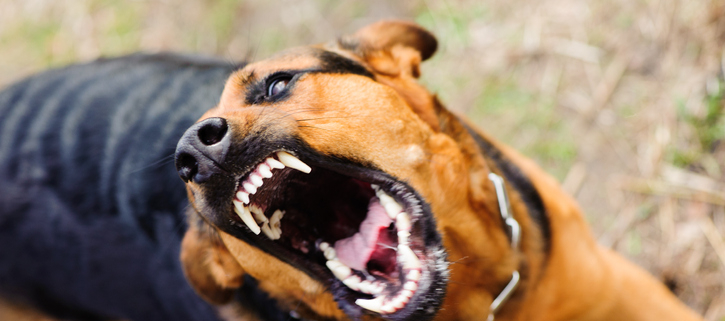Understanding Signs of Aggressiveness in Dogs
While dogs are often cherished members of our families, it’s essential
to recognize that any dog, regardless of breed or size, can display
signs of aggression under certain circumstances. Understanding these
signs is crucial for ensuring your dog’s safety and those around it.
Here are some common signs of aggressiveness in dogs to be aware of:
Growling and Snarling: Growling and snarling are explicit vocal
expressions of aggression. When a dog growls or snarls, it’s a warning
sign that they feel threatened or uncomfortable. It’s essential to pay
attention to this communication and address the underlying issue
promptly.
Bared Teeth: Baring teeth is an aggressive display that can precede a
bite. When a dog raises its lips to show teeth, it signals that they
are agitated or distressed. This is often seen during aggressive
interactions or when a dog feels cornered.
Stiff Body Language: An aggressive dog often exhibits stiff and rigid
body language. Their posture may become tense, with a straight back,
an erect tail, and a lowered or forward-leaning head. This body
language indicates that the dog is prepared to defend itself if
necessary.
Snapping or Biting: The most severe form of aggression is when a dog
resorts to snapping or biting. This can occur in response to perceived
threats or during territorial disputes. Any dog that bites should be
taken seriously, and professional help may be required.
Resource Guarding: Some dogs display aggression when protecting their
possessions, such as food, toys, or territory. This behavior, known as
resource guarding, can lead to aggressive displays if someone attempts
to take the guarded item.
Lunging or Charging: Dogs may lunge forward or charge at a perceived
threat or trigger, such as a passing dog or person. This behavior is a
clear sign of aggressive intent.
Excessive Barking: Aggressive dogs often bark excessively, especially
when confronted with a perceived threat. The tone and intensity of the
barking can convey their level of distress or agitation.
It’s important to note that aggressive dog behavior can have various
triggers, including fear, territorial instincts, pain, or even past
traumatic experiences. If you observe signs of aggressiveness in your
dog, it’s crucial to seek the help of a professional dog trainer or
behaviorist. They can assess the underlying causes of the aggression
and develop a customized plan to address and manage the behavior,
ensuring the safety and well-being of both your dog and those they
interact with. Early intervention and proper training can often help
manage and mitigate aggressive tendencies in dogs.



